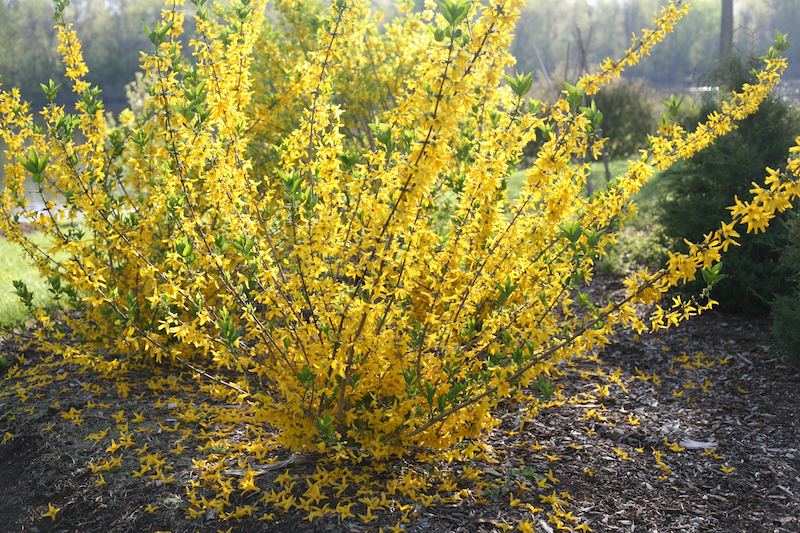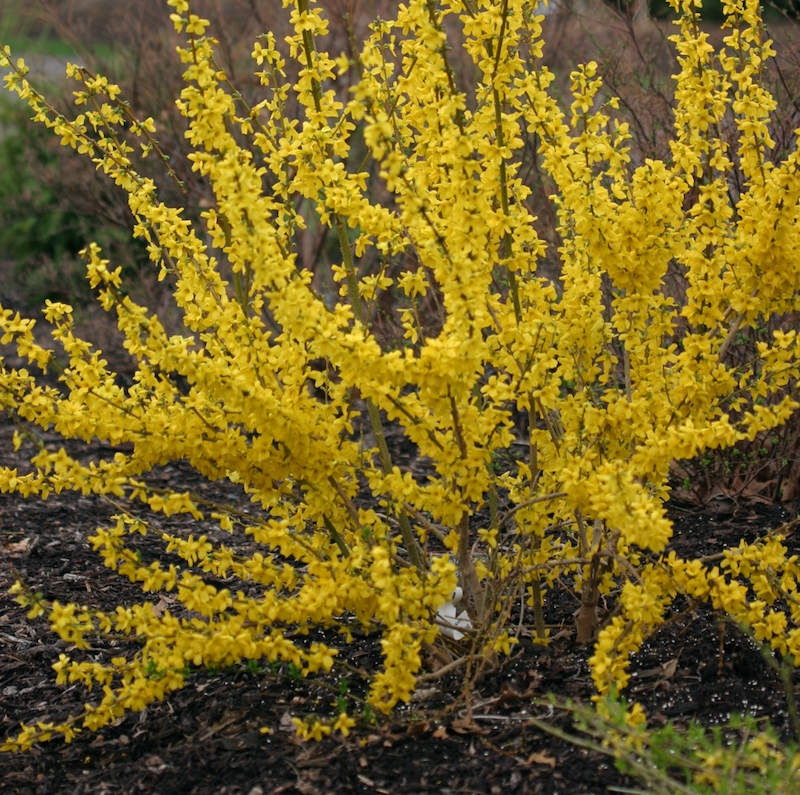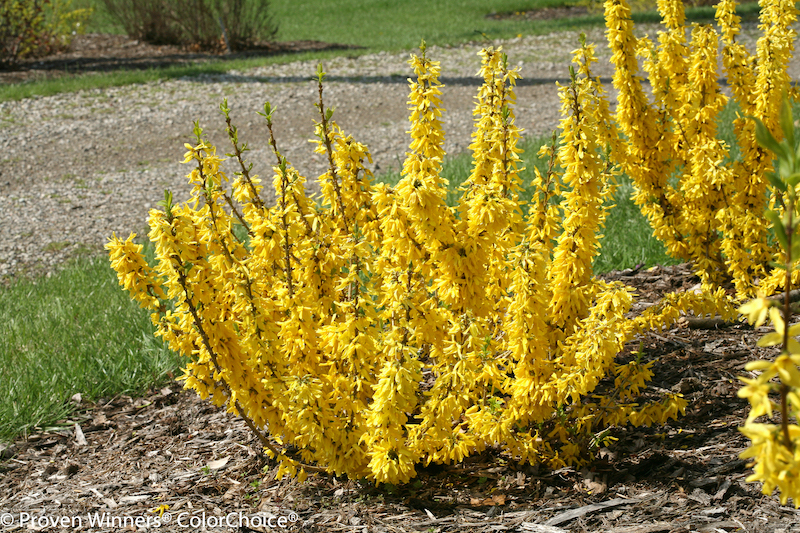Welcome in spring with the vibrant yellow blooms of the Forsythia. This deciduous shrub has woody stems and an upright growth habit. Dwarf varieties reach up to 3 feet tall, while other cultivars top out around 8 feet. The flowers emerge first in the spring and are replaced later in the growing season by dark green foliage. Forsythia is an easy-care perennial that settles in quickly and requires minimal care. Planting Forsythia correctly ensures this bush will grow and thrive.

What You Need To Plant Forsythia
- Shovel
- Compost or manure
- Garden spade
- Good location
- Water source
- Mulch
Where to Plant Forsythia
Plant Forsythia in a spot that receives direct light. This shrub needs at least 6 hours of light per day. Forsythia prefers damp conditions, but the soil must allow drainage so the roots do not get soggy. Soil pH is flexible as this plant can handle acidic or alkaline soil.

Forsythia Spacing
Forsythia has sturdy woody stems and an upright growth habit. Create a bold flower hedge by spacing Forsythia bushes 4 to 6 feet apart. Depending on the variety, this perennial will grow 3 to 6 feet wide, so leave ample space from other plants and buildings.

Steps To Plant Forsythia
Forsythia is easy to maintain as long as it is grown in a good location. Full sun and well-draining soil are a must. Dig a hole slightly larger than the root ball and mix in manure or organic compost to create a rich mix to support healthy growth.
Step 1 - Select an area that receives full sun
Step 2 - Create a hole larger than the root ball
Step 3 - Amend the soil with manure or organic compost
Step 4 - Place the root ball in the prepared hole so the top is even with the ground level
Step 5 - Backfill the hole and press the ground into place
Step 6 - Apply mulch around the base of the plant and water thoroughly
When to Plant Forsythia
Plant Forsythia in late fall or early spring. Any time the plant is dormant is a good time to plant. Planting during the growing season may stunt growth until the plant acclimates. Forsythia can be planted during the winter in areas in the more southern reaches of the growing zones where frost is not a concern.
Transplanting Forsythia
Transplanting Forsythia is best done in the spring after the bloom cycle ends or during the fall before the plant goes dormant. Propagate Forsythia by taking cuttings in the summer after the flowers fade. Plant the cuttings in a container after the roots are about one inch long. The cuttings can be planted in a permanent outdoor location after the plants have had at least a few months to establish a root system.
 |
Author Alison Cotsonas - Published 09-17-2022 |
